#upload.wikimedia.org
Text

"The tallest oak was once a little nut that stood its ground."
― Frank M. Kendralla
55 notes
·
View notes
Text

#commodore#VIC-20#mainboard#circuit board#wikipedia#VC-20#https://upload.wikimedia.org/wikipedia/commons/5/5b/4860_-_VIC-20_Mainboard.JPG#r
60 notes
·
View notes
Text
Jko
2 notes
·
View notes
Text
At the Delphinbrunnen, Volkspark Friedrichshain, Berlin
Photo by Thomas Lautenschlag, 2011
#saw a version of this going around without the location info and figured we could at least do a little better than that‚ given that#credit is the currency of the internet economy#and you do a disservice to both the original creator and to readers who might like to learn more when you pass around uncredited work#that said‚ i haven't been able to work out who the sculptor actually is and it's driving me nuts#looks like the image above was very carefully taken to crop out the child on the far side of the ram—cf#https://upload.wikimedia.org/wikipedia/commons/9/97/Am_M%C3%A4rchenbrunnen_VP_F%27hain_2017-10-09_ama_fec_%287%29.JPG#which is a less artful photograph but better documentation of the statue#i mean honestly the various statues around this fountain seem to have been damaged and swapped out and moved around enough times#that i'm not even sure whether this is a restored original or an interim replica or what#in conclusion: MIGHT be georg wrba but equally might not be#however. interesting to learn a little about the märchenbrunnen!#and good to at least pin the origin of this piece down that far‚ if no further#photography#thomas lautenschlag#berlin#art#sculpture
4 notes
·
View notes
Text
Serpientes y escaleras

https://upload.wikimedia.org/wikipedia/commons/4/4d/Estatua_equestre_Carlos_IV.jpg
https://mymodernmet.com/wp/wp-content/uploads/2021/03/manuel-tolsa-estatua-valencia.jpg
https://www.imer.mx/rmi/wp-content/uploads/sites/3/2015/04/3812.jpg
https://www.imer.mx/rmi/wp-content/uploads/sites/3/2015/04/3814-249x300.jpg
https://www.imer.mx/rmi/wp-content/uploads/sites/3/2015/04/3234-241x300.jpg
https://image.slidesharecdn.com/mxicoenelsigloxixpintura-120706190739-phpapp02/95/mxico-en-el-siglo-xix-litografas-y-pinturas-de-carl-nebel-5-728.jpg?cb=1342816663
https://image.slidesharecdn.com/mxicoenelsigloxixpintura-120706190739-phpapp02/95/mxico-en-el-siglo-xix-litografas-y-pinturas-de-carl-nebel-8-728.jpg?cb=1342816663
https://image.slidesharecdn.com/mxicoenelsigloxixpintura-120706190739-phpapp02/95/mxico-en-el-siglo-xix-litografas-y-pinturas-de-carl-nebel-27-728.jpg?cb=1342816663
https://www.meisterdrucke.es/kunstwerke/1200w/Edouard_Pingret_-_Scene_pres_dune_buvette_dans_une_rue_du_Mexique_une_femme_allaite_son_enfant_un_-_%28MeisterDrucke-1318556%29.jpg
https://www.meisterdrucke.es/kunstwerke/1200w/Edouard_Pingret_-_Acueducto_de_Chapultepec_-_%28MeisterDrucke-892264%29.jpg
https://museoblaisten.com/images/coleccion/CC__002.jpghttps://museoblaisten.com/images/coleccion/CC__002.jpg
https://museoblaisten.com/images/coleccion/CC__001.jpg
https://museoblaisten.com/images/coleccion/CC__003.jpg
https://museoblaisten.com/images/coleccion/JGP005.jpg
https://museoblaisten.com/images/coleccion/JGP003.jpg
https://museoblaisten.com/images/coleccion/JGP009.jpg
https://museoblaisten.com/images/coleccion/JGP__823.jpg
https://cdn.culturagenial.com/es/imagenes/la-catrina-de-jose-guadalupe-posada-og.jpg
https://mxcity.mx/wp-content/uploads/2018/05/Captura-de-pantalla-2018-05-17-a-las-5.35.06-p.m.-768x344.png
https://mxcity.mx/wp-content/uploads/2018/05/Captura-de-pantalla-2018-05-17-a-las-5.23.04-p.m..png
https://mxcity.mx/wp-content/uploads/2018/05/Captura-de-pantalla-2018-05-17-a-las-5.27.16-p.m..png
http://farm1.static.flickr.com/34/71785381_dce864bf45.jpg
https://upload.wikimedia.org/wikipedia/commons/0/0f/Gran_Teatro_Nacional_de_M%C3%A9xico.jpg
https://upload.wikimedia.org/wikipedia/commons/9/9f/Guadalajara%2C_Jalisco%2C_M%C3%A9xico_23.0.jpg
https://cdn-3.expansion.mx/dims4/default/e126f1c/2147483647/strip/true/crop/1165x653+0+0/resize/600x336!/format/webp/quality/90/?url=https%3A%2F%2Fcdn-3.expansion.mx%2Fff%2Fd7%2F3c60b683490db5d61be6a24051b0%2F6-faro-puerto-tamaulipas.jpg
https://cdn-3.expansion.mx/dims4/default/1e24117/2147483647/strip/true/crop/1150x779+0+0/resize/600x406!/format/webp/quality/90/?url=https%3A%2F%2Fcdn-3.expansion.mx%2F9f%2F5a%2Fc477d6c648d7895581988b388192%2F5-pabellan-morisco.jpg
https://mxcity.mx/wp-content/uploads/2019/12/palacio-de-hierro-768x576.jpg
https://upload.wikimedia.org/wikipedia/commons/0/08/Palacio_de_hierro_de_Orizaba%2C_Veracruz.jpg
https://www.eluniversal.com.mx/sites/default/files/u37791/2_12.jpg
0 notes
Photo

Ukraine land of Cossacks, 1720 map by Johann Baptist Homann.
117 notes
·
View notes
Text

You can download an entire 512mp scan of the Hieronymus Bosch Triptych "The Garden of Earthly Delights" off of Wikipedia for free and crop it however the fuck you like. The internet is special.
https://upload.wikimedia.org/wikipedia/commons/6/6d/The_Garden_of_Earthly_Delights_by_Bosch_High_Resolution.jpg
101 notes
·
View notes
Note
do you have a coat pattern reference for Mythril (Mithril?) ? im trying to make a fullbody fanart before drawing box dies and dont know how the lower half goes.
if not, is it like a cyan version of upload.wikimedia.org/wikipedia/commons/3/30/Vulpes_vulpes_ssp_fulvus.jpg with the darkening on the tail starting further down?

Yeah here's the ref! Since drawing box is shutting down so soon, please find an additional alternative way to send it to me.
21 notes
·
View notes
Note
Aqua from Kingdom Hearts
https://upload.wikimedia.org/wikipedia/en/8/84/Kingdom_Hears_Aqua.png

25 notes
·
View notes
Text
In the spring of last year, I made several color reconstructions of marine reptiles for a thesis and presentation (it was about the reconstruction of marine reptiles) for a conference that was held in Ulyanovsk in September. The drawings were done in ballpoint pen (lineart) and Paint Tool Sai 2.0 (shadows and colors).

The first is reconstruction of Mixosaurus cornalianus, a widespread small Triassic ichthyosaur. I had already drawn a Mixosaurus in water earlier and even wanted to use it in the article, but later changed my mind, deciding that lateral reconstruction would better convey the appearance of soft tissues. This earlier drawing can bee seen here:

Both pieces are based on the fin impressions described in 2020 from a specimen found in the Middle Triassic rocks of the Bezano formation, Italy (www.researchgate.net/publicati…). This specimen has preserved the tissues of the dorsal and caudal fins. Both prints have thin collagen filaments, and at the base of the caudal fin, it was possible to detect the remains of smooth, scaleless skin. The fins have a triangular shape, and the dorsal one is associated with 15-23 trunk vertebrae. In other words, its position turned out to be more
forward then in reconstructions done before his paper.

The second is lateral reconstruction of the metriorhynchid Cricosaurus albersdoerferi, belonging to a widespread genus that inhabited the shallow seas of future Europe, Central America and Argentina. It was not a particularly large animal, reaching from 2 to 3.2 meters in length. Like the first reconstruction of a Cricosaurus, which I performed in the spring, this drawing is based on a specimen that preserved a large volume of soft tissue on the tail (upload.wikimedia.org/wikipedia…). Also shown here is the salt gland in the antorbital fenestra, the presence of which was previously indicated in Cricosaurus araucanensis and Dakosaurus andiniensis. The spring work with C. albersdoerferi can be seen below:
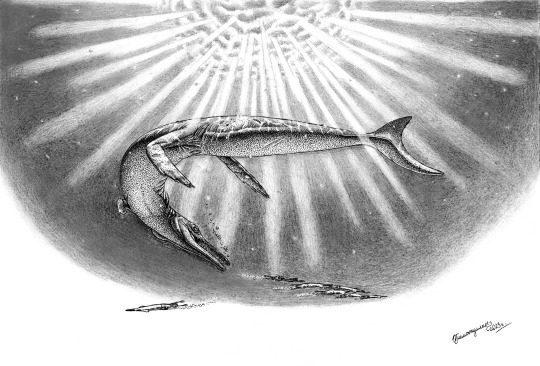

Plesiosaurs are mentioned too. This is reconstruction of the polycotylid Mauriciosaurus fernandezi from the Late Cretaceous of Mexico. A complete reptile skeleton preserved in fine-grained rocks was described by a team of paleontologists in 2017: www.researchgate.net/publicati… There are five types of soft tissue imprints around the bones. Among them are dark material, probably left from the walls of the peritoneum, dark gray traces of blubber and impressions of possible small scales. The impressions show that the animal's belly was covered with rectangular scales, which were mixed with inclusions of small fragments closer to the limbs. The scales of the living reptile were almost indistinguishable, so that the skin looked smooth. This beautifully preserved specimen showed that plesiosaurs had much more soft tissue than previously thought. The tail was especially fleshy. Fat deposits created a smooth, streamlined shape, ideal for an agile swimmer.
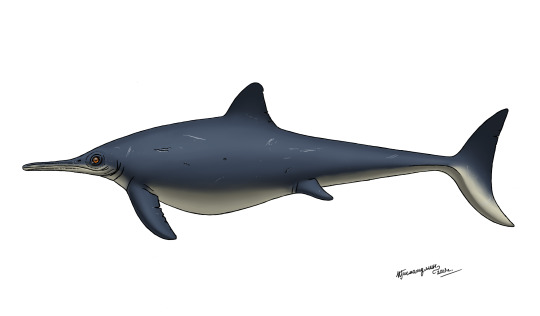
The last thesis drawing is this reconstruction of the famous Early Jurassic ichthyosaur Stenopterygius quadriscissus. Many of its skeletons of amazing preservation were found in the fine-grained limestones of Holzmaden, Germany. Some of them were discovered back in the 19th century, which made it possible to quickly correct previous ideas about ichthyosaurs. The Stenopterygius specimens retained soft tissue prints in the form of a bacterial film, which made it clear that they were fish-like creatures with a dorsal fin and a crescent tail. They re still attract the attention of researchers. In 2018, the skin structure of one partial specimen was studied: www.researchgate.net/publicati… A fossilized blubber was described, similar in microstructure to that of marine mammals and leatherback turtles. This led to the conclusion that ichthyosaurs were reptiles with a high metabolism, which required fat insulation. Blubber allowed ichthyosaurs to travel across the oceans, swimming even into the cold polar waters. In addition, this Stenopterygius had pigment cells - melanophores. They were absent on the ventral side, which means that the Stenopterygius had a dark back and a light belly. This countershading coloring is typical of today's marine vertebrates and serves as a camouflage.
I did also three works in fully traditional style, with pens and pencils, but I'll show them in the separate post. :)
#mixosaurus#stenopterygius#ichthyosaurs#cricosaurus#metriorhynchidae#mauriciosaurus#polycotylidae#plesiosaur#mesozoic marine reptiles#paleoart
31 notes
·
View notes
Text
OC in Three
Rules: post three images that describe an OC, with sources and image descriptions
Thank you @willtheweaver for the tag! I realized I’ve never done Goldenrod, so here she is



Ah Goldenrod, consistently a problem :)
@illarian-rambling @kaylinalexanderbooks @writingsfromspace want to play?
Sources below the cut:
https://upload.wikimedia.org/wikipedia/commons/5/5e/Tape_measure_colored.jpeg
https://picrew.me/ja/image_maker/582810
https://media.gettyimages.com/id/560409727/photo/woman-cheating-holds-other-mans-hand.jpg?s=1024x1024&w=gi&k=20&c=l9EQYtFYVWJn5xNgwbVGODQ4Bnq5CDSPSm7cl8Ctk9A=
15 notes
·
View notes
Text
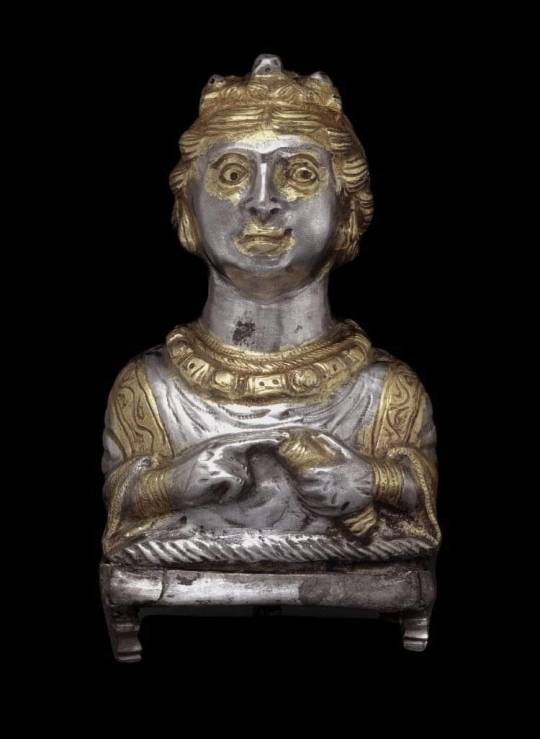
A silver pepper pot in anthropomorphic form. Roman Britain, buried in the 5th century AD, from Hoxne, Suffolk.
The pepper pot was found in 1992 by a farmer who was using his metal detector to search for a lost hammer. He found his hammer – it is now in the British Museum – but also a hoard of over 15,000 gold and silver coins, gold jewellery and numerous small items of silver tableware. The coins in the hoard establish that its burial took place some time after AD 407/8. Only a very wealthy family could have owned such treasures. We do not know the identity of the person who buried it but several objects are inscribed with the name Aurelius Ursicinus.
The pepper pot is in the shape of a wealthy well-fed woman wearing late Roman fashions. She wears a sleeved undergarment with tight gilded cuffs at the wrists, and a wide-sleeved over tunic with stripes of gilded and engraved decoration over the shoulders representing appliqued bands of embroidered or patterned textile (clavi).
Her golden (gilded) hair is done up in an intricate style that was often represented in late Roman art: the hair is parted in the middle, with rolls at the sides. The back hair is worked into a flat series of twisted locks at the neck that are drawn up over the back of the head, turned under at the front, and held in place with hairpins. Three knobs at the front and another at the crown of the head represent the ungilded hairpins.
Almond-shaped earrings and a necklace of large beads are depicted in relief and gilded, and there is additional gilding on the face, covering not only the eyes but the entire eye sockets, and the mouth, so as the flames from oil lamps flickered, the face would have seemed to come alive.
She holds a gilded scroll in her left hand, to which she points with the index finger of her right hand, probably to symbolise her learning and authority. We do not know if the figure represents a particular woman. ... It's ineffable.
Pepper was just one expensive luxury traded across the Indian Ocean in ancient times, as it did not grow in Britain or any other part of the Roman Empire. It was grown in India and to get to Suffolk, the pepper was transported by sea, river and over land.

https://www.britishmuseum.org/collection/object/H_1994-0408-33
http://www.teachinghistory100.org/objects/about_the_object/pepper_pot
https://upload.wikimedia.org/wikipedia/commons/thumb/1/1a/Hoxne_Hoard_28.jpg/800px-Hoxne_Hoard_28.jpg
spotted on Archaeologist Ticia Verveer's facebook page; https://www.facebook.com/100044382881604/posts/pfbid0UGcEJok8i67xeezyj2CLcKMJsbnLKAkWdy7NmP8TKZZ55opE4nU5fdVfqTSm7URXl/
#antique#ancient#archaeology#pepper#pepper pot#ancient history#ancient art#silver pepper pot#crowned figures#fashion history#ineffable inspiration#5th century ce#gilded figures#Aurelius Ursicinus#ancient roman art#ancient rome#ancient britain
192 notes
·
View notes
Note
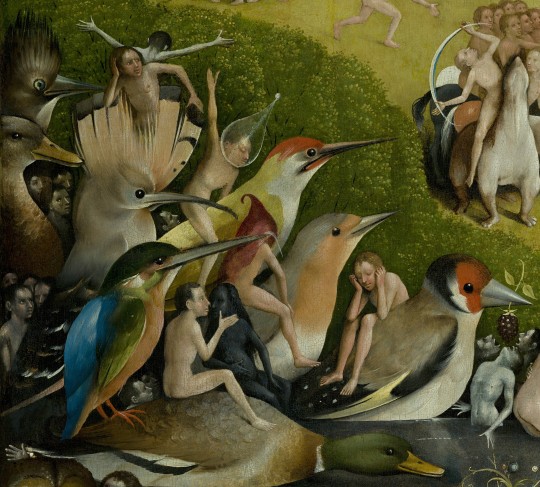

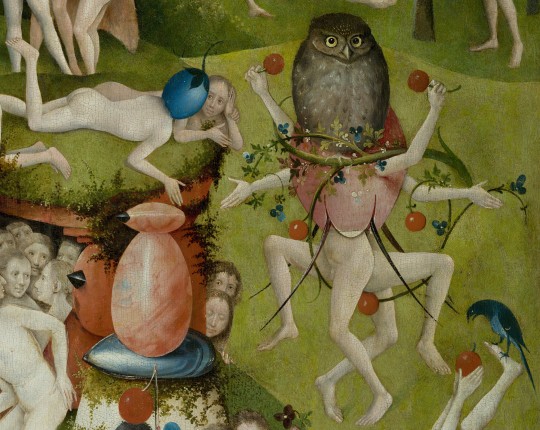


here are some ideas on what to zoom in on for the garden of earthly delights :) i know it's still a lot but there's just sooo much going on in the painting!
here is a high res jpg (too high for a tumblr upload 😬): https://upload.wikimedia.org/wikipedia/commons/6/6d/The_Garden_of_Earthly_Delights_by_Bosch_High_Resolution.jpg
Reply of the Zaporozhian Cossacks vs The Garden of Earthly Delights
26 notes
·
View notes
Text

July's Fossil of the Month - Ceratomyrmex (Ceratomyrmex ellenbergeri)
Family: Ant Family (Formicidae)
Time Period: Late Cretaceous (98 Million Years Ago)
Known from the extremely well-preserved bodies of individuals found sealed in amber (fossilized tree resin,) Ceratomyrmex ellenbergeri, known colloquially as the "Hell Ant", is a species of ant that lived across much of what is now Asia during the late Cretaceous period. Small insects like ants rarely fossilize well owing to their size, relatively fragile exoskeletons and the high likelihood of other animals ingesting their remains after death, but when sealed in amber their bodies are inaccessible to predators or oxygen-dependant decomposing bacteria, allowing them to be almost perfectly preserved and providing greater insight into the variety of smaller animals that lived alongside better-preserved larger species as well as the wider ecosystems in which they existed. The preserved members of this species range from 4.5–5.9mm (0.18-0.23 inches) in length and are similar to most modern ants in terms of their overall anatomy with the notable exception of their heads; the jaws of Ceratomyrmex were massively elongated and curved upwards until they met a single horn-like protrusion that extended from between the base of its antennae, forming a large crane-claw like structure. Like the jaws of modern trap-jaw ants of the genus Odontomachus the "horn" of Ceratomyrmex was lined with a large number of sensitive hair-like structures called setae, and as such it is assumed that, like the jaws of trap-jaw ants, the "claw" Ceratomyrmex's horn and jaws formed was able to snap shut at incredible speed in order to grab prey and defend against predators. All of the over 12,000 known extant ant species are eusocial (meaning they live in large and highly organised colonies,) with individuals developing into one of a small number of distinct body forms, known as castes, upon reaching adulthood (typically either workers, which are by far the most common caste and are responsible for gathering food, caring for larvae and maintaining the colony's nest, soldiers, which are larger and stronger than workers and are tasked with defending the colony from predators, queens, which are the only members of the colony capable of laying eggs and thus produce all other members of the colony, and drones, which are the only males in the colony and leave to mate with new queens from other colonies during the mating season,) and as queens rarely if ever leave the colony’s nest, soldiers are not seen in all species and drones are usually winged, it is believed that all of the preserved individuals to have been identified thus far are workers.
--------------------------------------------------------------------------
Image Source: https://upload.wikimedia.org/wikipedia/commons/1/1b/Ceratomyrmex_ellenbergeri_NIGP164022_profile.jpg
#Ceratomyrmex#ant#ants#zoology#biology#entomology#paleontology#wildlife#prehistoric wildlife#animal#animals#prehistoric animals#prehistoric invertebrates#insect#insects
52 notes
·
View notes
Text
Preliminary Poll
Breakdown
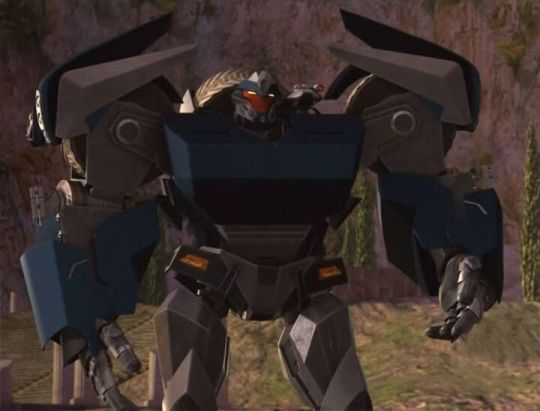
Submission reason:
He got killed off because budget constraints on the show made it nessecary to fire an actor. They chose Breakdown's actor. He was supposed to get a redemption arc, but he didn't. Cause they Killed Him.
He was really cool and apparently at one point was planned to become a good guy but then they killed him for budget reasons and then a human bad guy was put in his corpse and then he became a vampire-zombie and then died for the last time (yes in that order)
Dismembered by an evil spider lady (Airachnid) and then his corpse was put back together and used as a biomech suit to keep someone alive that attempted and partially succeeded in vivisecting him (Silas)
The biomech corpse with Silas inside it was then named CYLAS and used as a living petri dish with dark and synthetic energon that caused a massive vampire zombie Terrorcon outbreak that got the corpse killed by Airachnid a second time
TLDR: Man got his eyeball stolen, then he got dismembered, then his corpse got turned into a mech suit, and then the mech suit corpse got turned into a zombie vampire
Propaganda:
He's a Decepticon but he's shown on screen talking to and interacting with Vehicons like they're people and not disposable grunts and he's the only Decepticon that does that. Actually I think he's the only character in the show that does that
He's nice to the nameless faceless Vehicons and is totally gay married to Knock Out
Kissing his Boyfriend https://upload.wikimedia.org/wikipedia/en/thumb/e/e1/Knock_Out_%26_Breakdown_Kiss.jpg/300px-Knock_Out_%26_Breakdown_Kiss.jpg
#look how they massacred them poll#look how they massacred my boy#transformers#transformers prime#breakdown#tfp breakdown#transformers breakdown
47 notes
·
View notes
Text




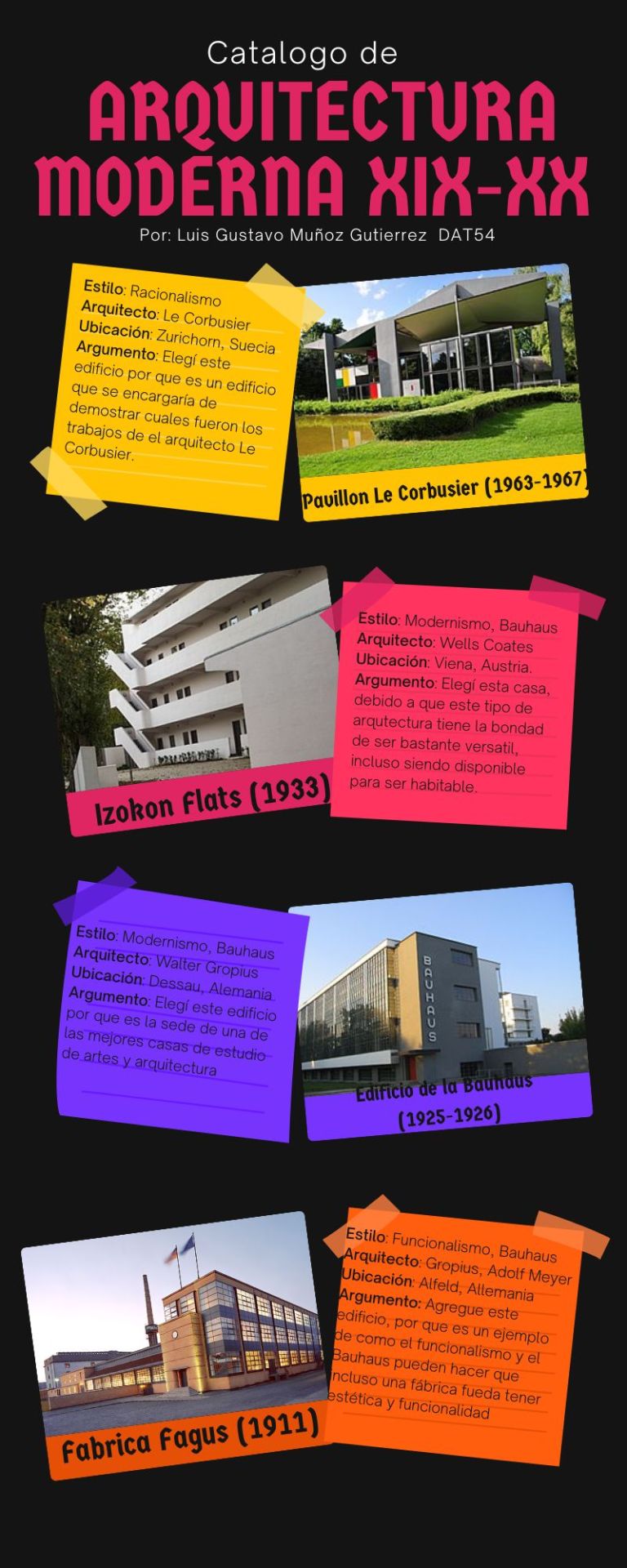
#Links de imágenes#1.#Arco del triunfo: https://upload.wikimedia.org/wikipedia/commons/7/79/Arc_de_Triomphe%2C_Paris_21_October_2010.jpg#2.#Iglesia de la Madeleine: https://upload.wikimedia.org/wikipedia/commons/3/3a/Madeleine_Paris.jpg#3.#Teatro Degollado: https://upload.wikimedia.org/wikipedia/commons/9/9f/Guadalajara%2C_Jalisco%2C_M%C3%A9xico_23.0.jpg#4.#Catedral de San Patricio: https://upload.wikimedia.org/wikipedia/commons/e/ee/StPatCathExt1.jpg#5.#Torre Eiffel: https://upload.wikimedia.org/wikipedia/commons/a/af/Tour_eiffel_at_sunrise_from_the_trocadero.jpg#6.#Palacio de Cristal: https://upload.wikimedia.org/wikipedia/commons/a/af/Tour_eiffel_at_sunrise_from_the_trocadero.jpg#7.#Biblioteca de Santa Genoveva: https://es.wikipedia.org/wiki/Biblioteca_de_Santa_Genoveva#/media/Archivo:Salle_de_lecture_Bibliotheque_Sainte-Genevieve_n03.jpg#8.#Museo Horta: https://es.wikipedia.org/wiki/Museo_Horta#/media/Archivo:Hortamuseum.tif#9.#Casa Nelissen: https://fr.wikipedia.org/wiki/Maison_Nelissen#/media/Fichier:Maison_Nelissen_01.JPG#10.#Hotel Solvay: https://es.wikipedia.org/wiki/Casa_Solvay#/media/Archivo:Avenue_Louise_81_Louizalaan_Brussels_2012-08.jpg#11.#Edificio Chrysler: https://imagenes.elpais.com/resizer/TEqxaiQcPAhkxkj8Aavh_W-F-kM=/1960x0/arc-anglerfish-eu-central-1-prod-prisa.s3.amazon#12.#Edificio El Moro: https://es.wikipedia.org/wiki/Edificio_El_Moro#/media/Archivo:Edificio_El_Moro_2010.JPG
0 notes
